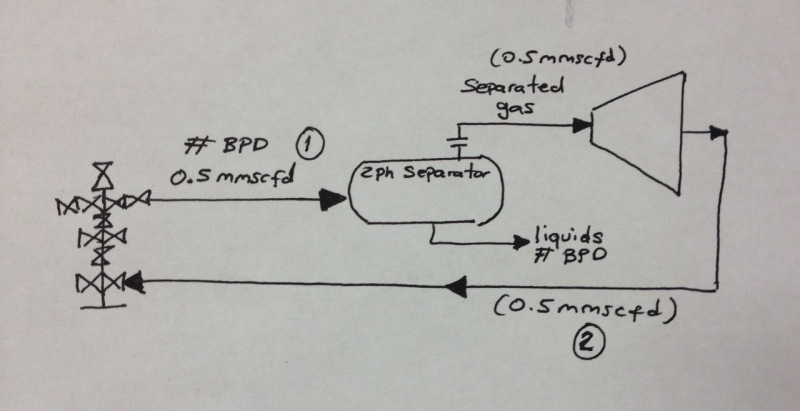Let´s say the well is producing (after a 2-phase separation process) 0.5 mmscfd of gas, we compress that and reinject it to the well. What would it be the gas flow now produced for the well? assuming there was no oil production increase (since the optimal parameters have to be found out still).
A coworker claims it will be added and then the compressor would be able to inject, roughlfy, 1.0 mmcsfd. I say it is not that way since provided we don´t increase the oil production we cannot get any more gas from the same liquids flow, it is a closed-loop that needs to be in balance, until a variable is changed, in this case the oil production (that can be achieved by fisrt inducing the well with nitrogen injection, to increase the production and then being able to operate our system of separation-injection).
I work with reciprocating compressors, and barely know about the well behaviour.
Thanks.
A coworker claims it will be added and then the compressor would be able to inject, roughlfy, 1.0 mmcsfd. I say it is not that way since provided we don´t increase the oil production we cannot get any more gas from the same liquids flow, it is a closed-loop that needs to be in balance, until a variable is changed, in this case the oil production (that can be achieved by fisrt inducing the well with nitrogen injection, to increase the production and then being able to operate our system of separation-injection).
I work with reciprocating compressors, and barely know about the well behaviour.
Thanks.

